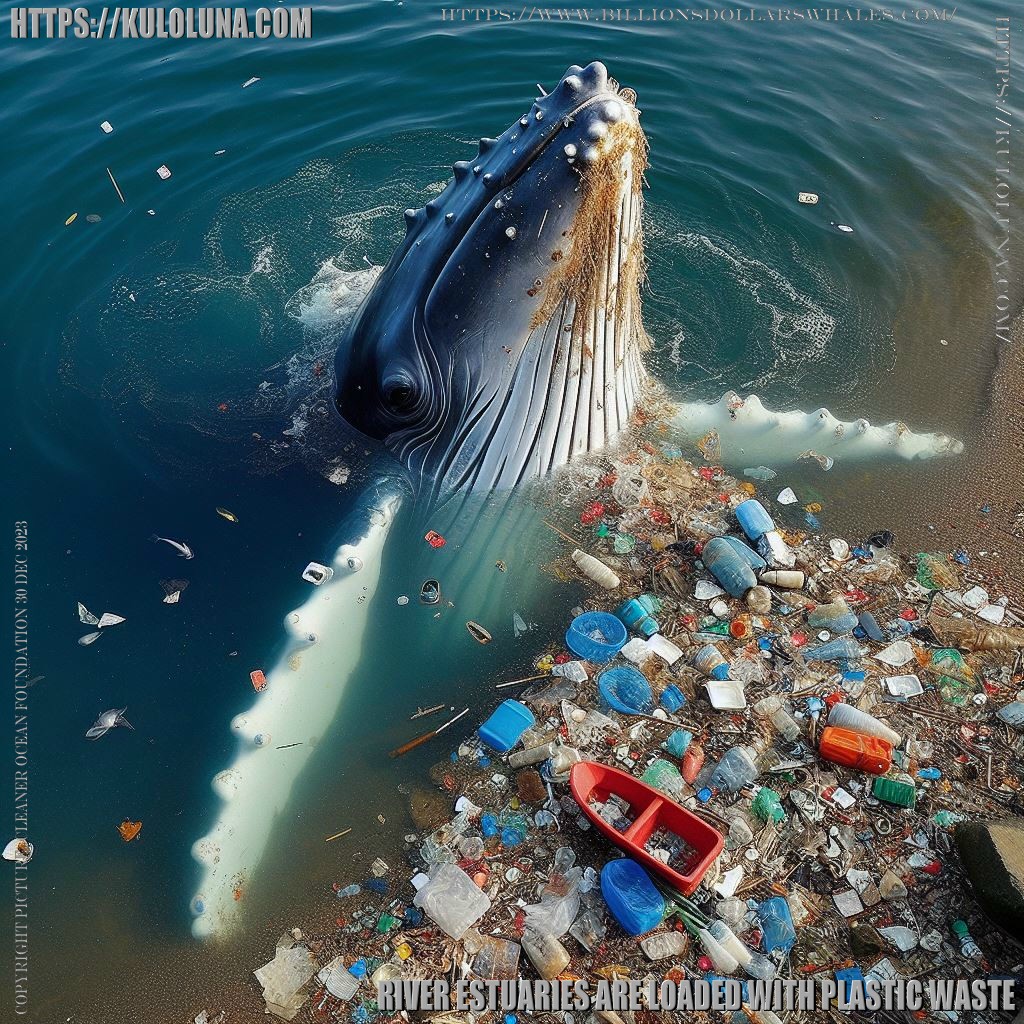
There are some reports and studies about humpback whales being caught up, drowning or otherwise killed in ghost fishing nets or ropes. Ghost fishing is the term used to describe the entanglement or trapping of marine animals by lost or abandoned fishing gear. Ghost fishing can cause serious injuries, infections, starvation, suffocation, drowning, or predation to the affected animals.
According to web search results, humpback whales are one of the species that are vulnerable to ghost fishing, especially in their migration and breeding grounds.
As
you read this, another whale, seal or turtle will have died from
drowning, or starvation from ingesting marine litter. Like us, you may
feel powerless and angry, that our marine cousins are effectively being
tortured and murdered by the inaction of uncaring politicians, who rake
in their salaries for not rocking the boat. That's right, they are paid
for turning a blind eye - or for doing nothing - if you prefer.
They
thus, become party to the violations you see here. Willingly, or unwillingly.
Ignorance of the law is no excuse.
We
have, in effect, become animal rights activists. Our lead campaign to
raise awareness of the underwater suffering is the Kulo-Luna story. A nautical tale that encompasses
as many of the serious wrongs as practical, in one screenplay,
that we hope may eventually make it to the silver screen.
Before
embarking on these ocean awareness campaigns, we first spent five long
years hoping to make a difference by direct action, as in developing machines
to recover dumped fishing/trawling nets. To no avail. But during those
five years of engineering development and direct lobbying, we did learn
a great deal as to why nobody seemed to care enough, to take more
positive action to prosecute animal rights abuses. To the point where,
politicians and policy makers become party to the offences. No matter
what excuses they offer. A crime is a crime. And failing to take action
to prevent crime, is a crime in itself. It's called Joint Enterprise.
The clue being in the word: "Enterprise." As in making money.
It
seems to be all about the money. Or maybe there another way of looking
at it?
We
should encourage and reward responsible fishing by responsible
fishermen. By cutting through as much red-tape as possible to attract
fresh blood, even including sustainable coaching. The same should apply
to responsible policy makers. We need to encourage honest politicians to
compete, who often have to swim upstream in shark infested waters. We
need to level the playing field with a requirement for transparency,
declarations of interests, and digital financial health checks.
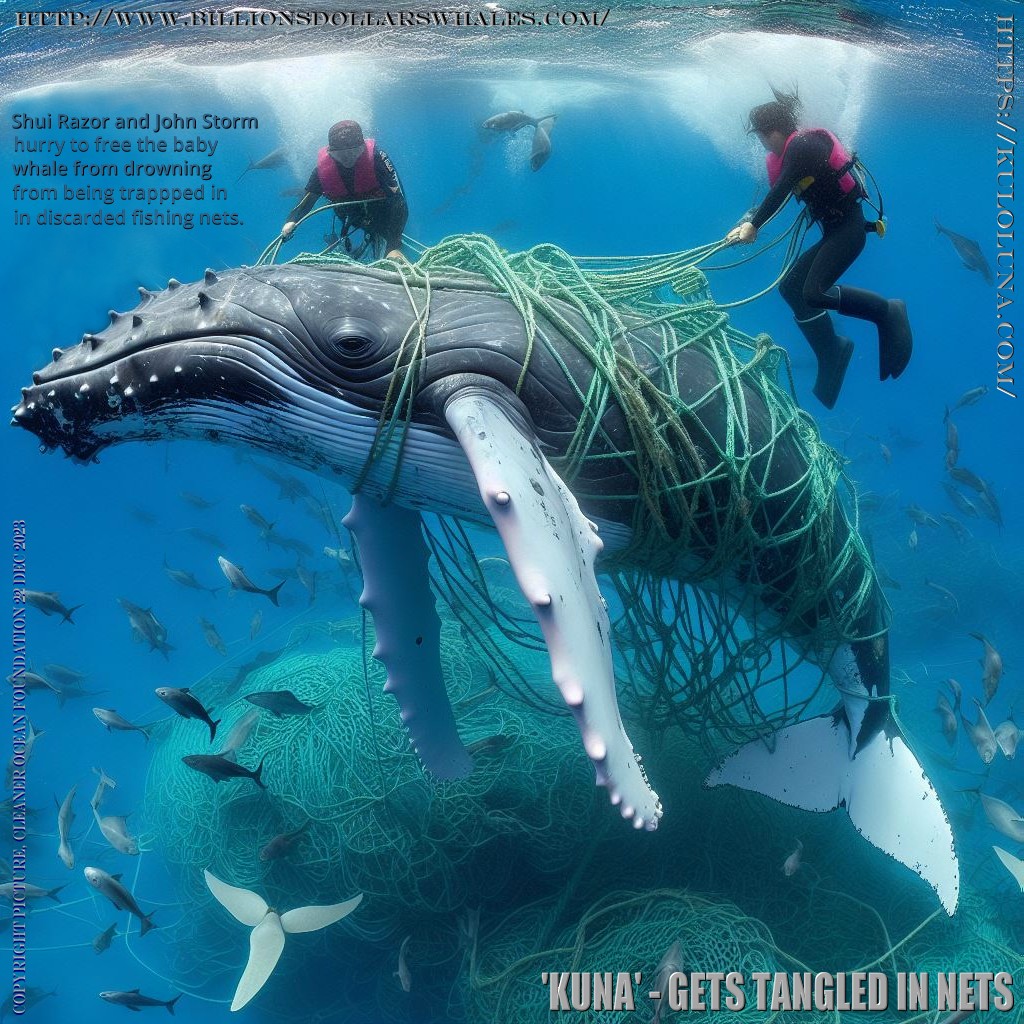
Plastic pollution is a serious threat to marine life and ecosystems. Plastic can affect marine species in various ways, such as:
- Entanglement: Large items of plastic, such as fishing gear, six-pack rings, and plastic bags, can capture and entangle marine mammals, fish, turtles, and birds, and prevent them from escaping, feeding, or moving normally. This can cause injuries, infections, starvation, suffocation, drowning, or predation.
- Ingestion: Small pieces of plastic, such as microplastics and fragments, can be mistaken for food by marine animals, from zooplankton to whales. This can lead to digestive problems, internal injuries, reduced stomach capacity, malnutrition, starvation, or toxic contamination.
- Toxic contamination: Plastic can absorb and release harmful chemicals, such as
persistent organic pollutants
(POPs), heavy metals, and endocrine disruptors, into the water or into the tissues of marine organisms. This can affect their growth, development, reproduction, immunity, and behaviour, and potentially cause diseases, mutations, or cancers. These chemicals can also biomagnify up the food chain, posing risks to human health and food safety.
- Habitat degradation: Plastic can damage or alter the physical structure and function of marine habitats, such as coral reefs, seagrass beds, and mangroves. Plastic can smother, break, or erode these habitats, reducing their biodiversity, productivity, and resilience. Plastic can also transport invasive species or pathogens across regions, disrupting the ecological balance.
WHAT ARE ANIMAL RIGHTS?
Animal rights, is the philosophy that many, or all sentient animals have moral worth independent of their utility to humans, and that their most basic
interests - such as avoiding suffering - should be afforded the same consideration as similar interests of human beings. Animal rights advocates oppose the use of animals for food, clothing, entertainment, or experimentation, and argue that animals have inherent value and rights that should not be violated by humans.
Animal welfare is the position that animals should be treated humanely and that their suffering should be minimized or avoided, but that some use of animals by humans is acceptable or
necessary. Animal welfare supporters accept the legal status of animals as property, but seek to improve the conditions and regulations of animal industries, such as farming, hunting, or research.
Animal liberation is the movement that seeks to end the exploitation and oppression of animals by humans, and to grant them the same moral consideration and rights as
humans. Animal liberationists often use direct action, such as protests, boycotts, or sabotage, to challenge the institutions and practices that harm animals.
ENFORCEMENT AND PROSECUTION
This is a matter of applying the existing laws and regulations that protect animal rights and welfare, and punish those who violate them. For example, in the UK, the Animal Welfare Act 2006 makes it an offence to cause unnecessary suffering to any animal, and the Wildlife and Countryside Act 1981 makes it an offence to intentionally or recklessly disturb or injure any wild animal. The CPS has the responsibility to prosecute offenders, taking into account the evidential and public interest considerations.
The general rule is that animals should not be subjected to torture, as with the
matter of ghost fishing nets. However, there are also challenges and limitations to each of these approaches, such as the lack of resources, coordination, and cooperation among different agencies, countries, and stakeholders.
But, we wonder if administrative ineptitude is sufficient excuse, to
secure a 'Not Guilty' verdict.
The regulation of ghost fishing nets in international waters is a challenging issue, as it involves multiple jurisdictions, actors, and interests. There are some existing international laws that address the problem, but they are not very effective or enforceable.
According to web search results, some of the relevant international laws are:
The London dumping regime, which prohibits the deliberate dumping of plastic waste at sea from vessels and platforms. While the London regime does not apply to accidental loss of fishing gear,
MARPOL does by prohibiting the discharge into the sea of all plastics, including nets, FADs and other fishing gear, both deliberate and accidental. The MARPOL Convention, prohibits both deliberate and accidental discharge of plastics from vessels.
There is, however, an important loophole: the prohibition does not apply to
fishing vessels where “all reasonable precautions have been taken to prevent such loss” or where the discharge of fishing gear is necessary for the protection of the environment. Guidelines adopted in 2017 provide some indication of what constitutes reasonable precaution – for example, proper sorting and collection of plastic waste in a manner that avoids their loss overboard.
Wherever there is a loophole, devious operators will exploit it.
The UN Fish Stocks Agreement, which requires states to cooperate in the conservation and management of straddling and highly migratory fish stocks, and to minimize the impact of fishing activities on the marine environment.
The Food & Agriculture
Organization (FAO) Code of Conduct for Responsible Fisheries, which provides voluntary guidelines for states and fishers to ensure the sustainable use of aquatic resources, and to reduce waste, discards, and ghost fishing.
The UN Guidelines on the Marking of Fishing Gear, which provide voluntary standards for the identification and retrieval of lost or abandoned fishing gear.
Voluntary! Have you ever heard of a criminal turning himself in?
These laws have several limitations, such as:
- They do not cover all types of fishing gear, vessels, or activities that contribute to ghost fishing nets.
- They rely on the cooperation and compliance of states and fishers, which may vary depending on their capacities, incentives, and interests.
- They lack effective monitoring, reporting, and enforcement mechanisms, especially in areas beyond national jurisdiction.
- They do not address the root causes of ghost fishing nets, such as overfishing, illegal fishing, poor management, and inadequate disposal facilities.
- Therefore, it is not easy to hold the perpetrators of ghost fishing nets accountable, or to prevent them from escaping their duty of care, in international waters. More efforts are needed to strengthen the existing laws, to develop new binding agreements, and to enhance the cooperation and coordination among different stakeholders.
HOW
MANY FISHING VESSELS?
An estimated half of ocean plastic pollution comes from some 4.5 million fishing vessels operating in national and international waters. Recent research suggests more than 100 million pounds of plastic enters the oceans from industrial fishing gear alone.
If
there is one million tons of fishing gear being dumped every year, that
means that each fishing vessel is responsible for disposing of 222
kilograms of netting and ropes, every year.
Why
not make it a crime to sell ropes and nets to anyone without a fishing
licence? With every purchaser required to register their purchases.
Verified names and addresses, and details of the vessel(s) being
operated.
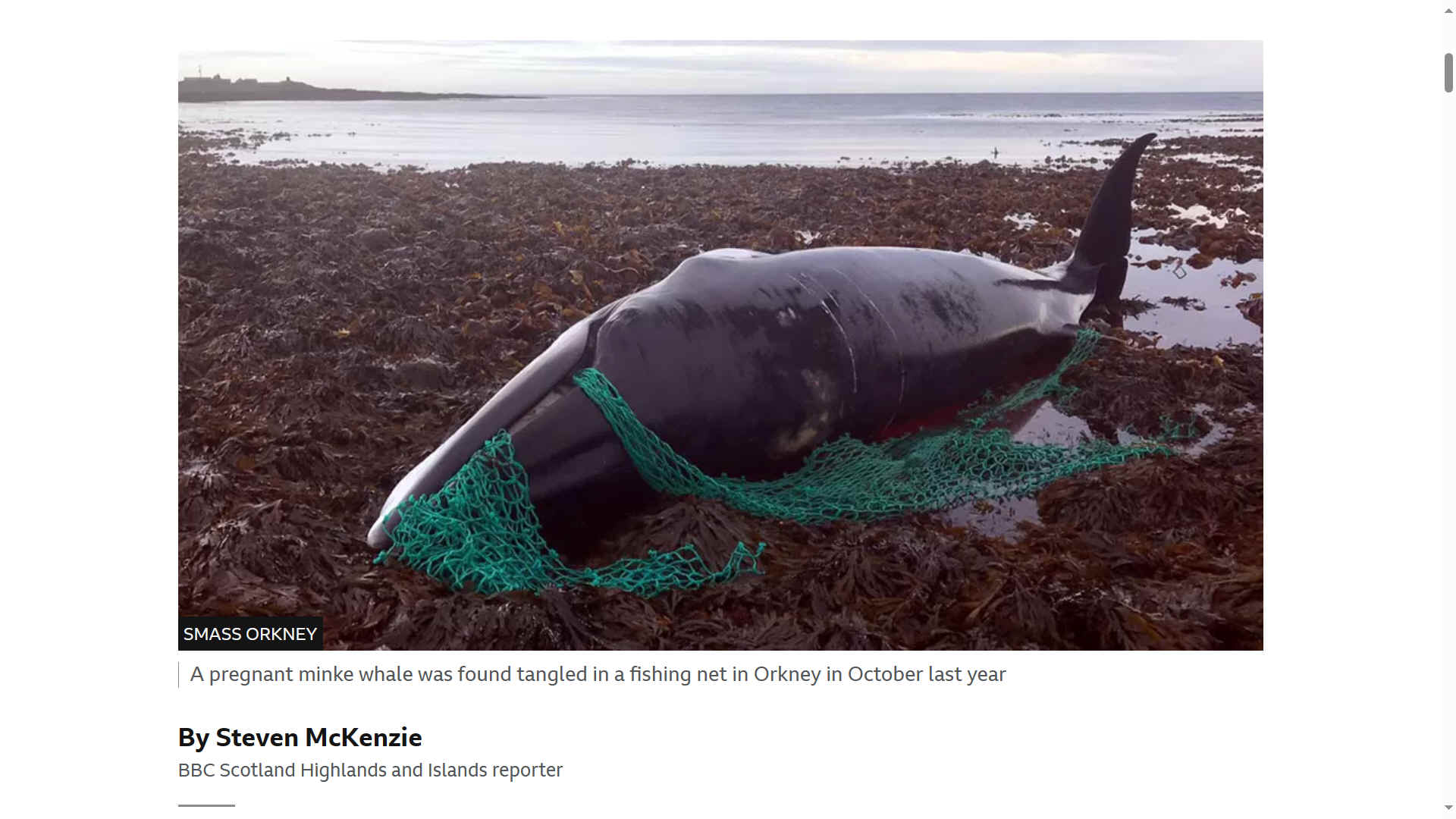
OCTOBER
2019 - In Scotland, the Scottish Marine Animal Strandings Scheme (Smass), which investigates marine animal deaths, recorded 12 entanglement cases in 2019.
They included a pregnant Minke whale found dead and tangled in a fishing net in Orkney in October. The net was jammed in the animal's baleen, the filter-feeder system inside its mouth.
In May, a humpback whale entangled in fishing gear washed up dead close to Scrabster, near Thurso on the north Caithness coast.
The previous month, another humpback whale was found to have been entangled in rope for "weeks, if not months" before it drowned off the East Lothian coast near Tyningham.
A sperm whale that died after stranding on the Isle of Harris in November had a 100kg "litter ball" in its stomach.
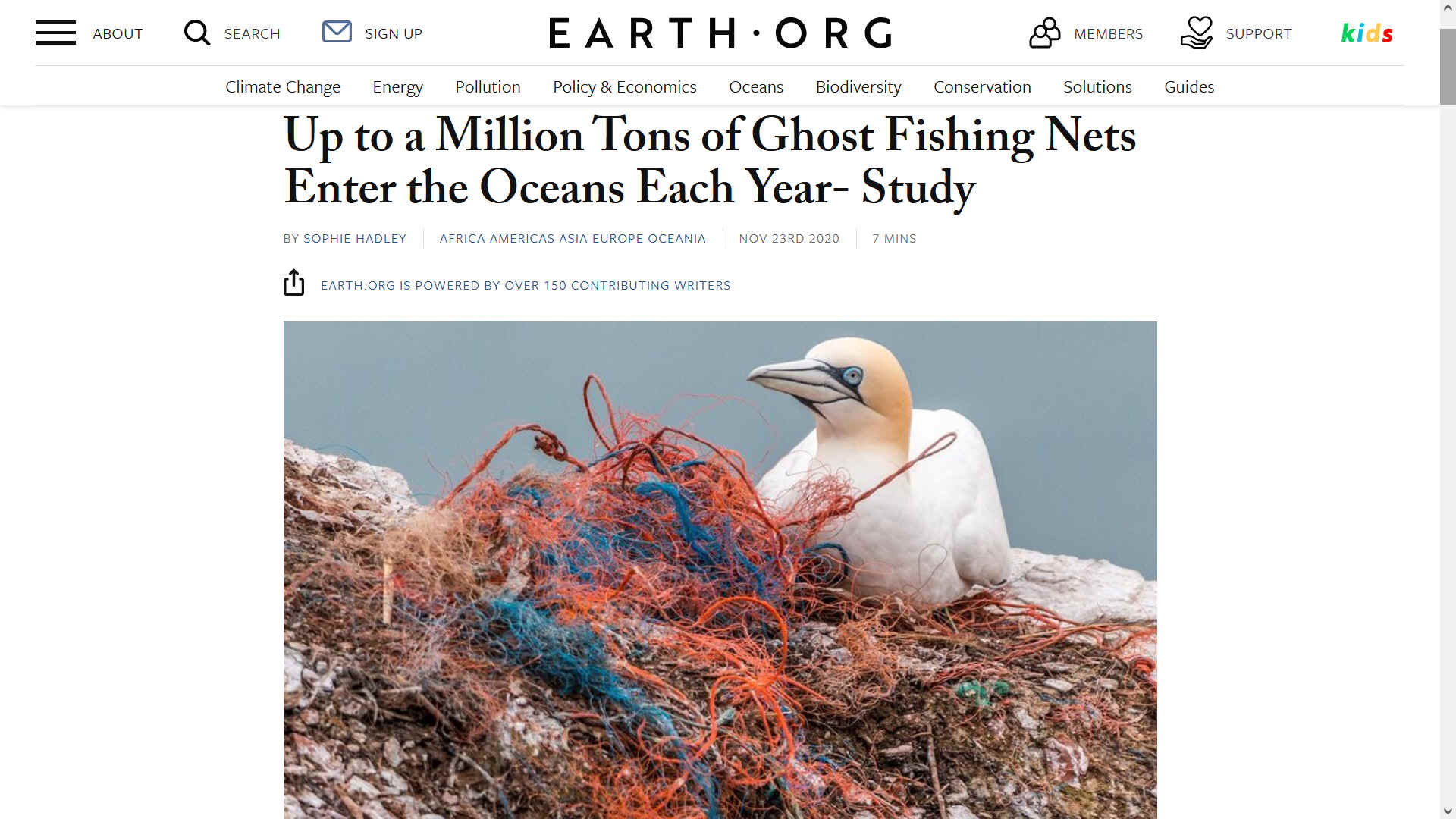
....
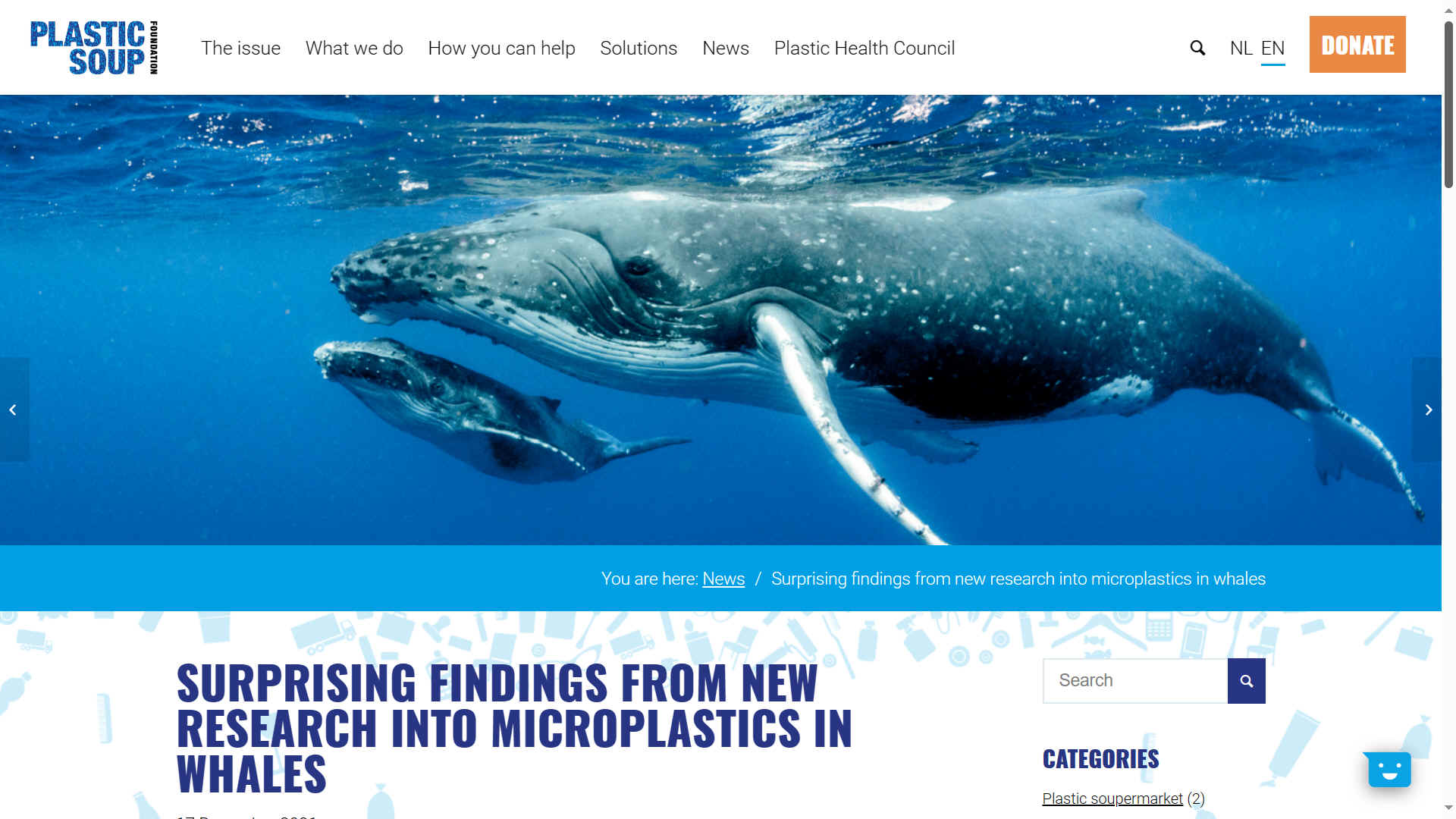
ABANDONED, LOST & DISCARDED FISHING GEAR (ALDFG)
While there has been some progress and willingness to address the issue of ocean plastic, thus far, Abandoned, Lost and Discarded Fishing Gear (ALDFG) has not been explicitly mentioned in the international legally binding instrument on plastics.
ALDFG, also known as ghost gear, is both the most harmful form of marine debris and one of the most significant contributors to ocean plastics. A single abandoned net is estimated to kill an average of 500,000 marine invertebrates(think crabs and shrimp), 1,700 fish and four seabirds. Some estimates show that an as much as 30% decline in fish stocks can be attributed to ghost gear.
Furthermore, scientists estimate that up to 70% of all floating macroplastics in ocean gyres by weight are from ALDFG. When swallowed, ocean plastics have been shown to block the digestive tracks and eventually kill marine animals of all sizes. In May 2020, after performing a necropsy on a 47-foot-long beached sperm whale, scientists discovered that its stomach was filled with a mass of fishing line, fishing nets and other plastics which prevented it from absorbing nutrients.
The science is clear - ghost gear, a major source of ocean plastics, must be addressed in order to protect marine life and environments, and the fisher and coastal communities that rely on it for their livelihoods. Thus, if we want to collectively tackle plastic pollution and its impact on the environment, a holistic strategy must include recognition of the threat of ghost gear and binding measures to prevent and mitigate its impacts on an international level.
More than 12 million tons of plastic end up in our seas every year. Plastic pollution plagues every corner of the ocean and despite growing awareness, the problem is only getting worse.
Fishing gear accounts for roughly 10% of that debris: between 500,000 to 1 million tons of fishing gear are discarded or lost in the ocean every year. Discarded nets, lines, and ropes now make up about 46% of the Great Pacific Garbage Patch.
Ghost fishing gear is the deadliest form of marine plastic as it unselectively catches wildlife, entangling marine mammals, seabirds, sea turtles, and sharks, subjecting them to a slow and painful death through exhaustion and suffocation. Ghost fishing gear also damages critical marine habitats such as coral reefs. Additionally, it’s responsible for the loss of commercially valuable fish stocks, undermining both the overall sustainability of fisheries as well as the people who depend on fish for food and livelihoods.
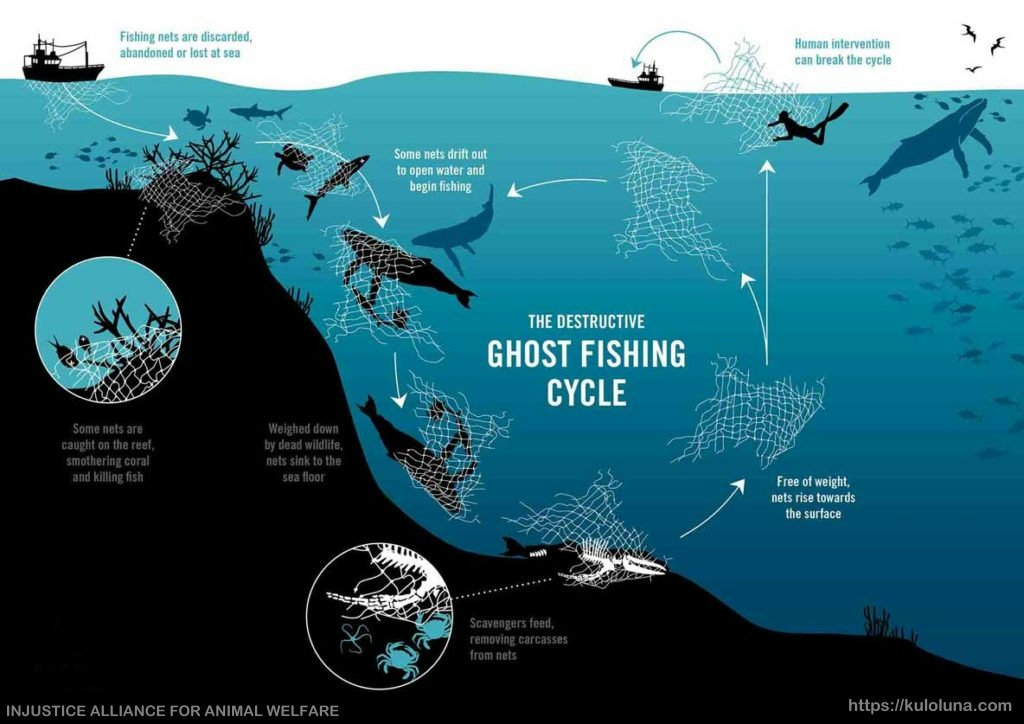
It is estimated that ghost nets make up 46% of the
Great Pacific Garbage Patch (now 1.6 million square km in size, three times that of France) and up to 10% of all marine litter.
In 2018, it was reported that up to 650 000 marine animals are killed by ghost nets every year. If the animal is lucky enough to escape, it may still die from its injuries. Often these tragic circumstances cause a long, painful death. If the ghost net is caught on the seabed, smaller ocean creatures begin feeding on the dead catch in the nets, reducing its weight and allowing the netting to float up to the surface again. This in turn creates a destructive cycle.
Figures indicate that over 40 000 tons of gillnets are abandoned every year in South Korean waters (where the netting is particularly popular) each year. In the North-East Atlantic, 25 000 ghost nets are discarded each year – totalling up to 1 250km in length. Between 2014 and 2015, volunteers retrieved marked ghost nets that travelled 4 700km from Maine, USA to the Cornish coast in England, totalling 51 tonnes of netting. 7 000km worth of gillnets are lost in the
Atlantic Ocean annually, while in the United Arab Emirates, 260 000 traps are lost yearly and 250 000 in the
Gulf of
Mexico. A 12-month study in Thailand waters showed that 96% of tangled animals were non-targets for fishermen. Finally, between 2004 and 2015, 13 000 ghost nets were removed from the northern coast of Australia.
It takes approximately 600-800 years on average for ghost fishing nets to naturally decompose.
Seals and sea lions are particularly vulnerable, 1,500 Australian sea lions die annually due to entanglement; 53% of these entanglements between 1997 and 2002 involved pups. In 2018, more than 300 dead olive ridley sea turtles were spotted off the coast of Mexico. It was determined that they died from hooks and nets. Further, more than 80% of Indian Ocean dolphins have been killed from gillnets, classified as ‘by-catch’ while fishermen were fishing for tuna. Also, the Vaquita (the most critically endangered ocean species) is facing imminent extinction due to illegal fishing in the Sea of Cortez, the one place where vaquitas are found. However, they are collateral in the search for the Totoaba fish, highly desired for its medicinal properties. As of March 2020, there are only ten remaining Vaquita in the ocean.
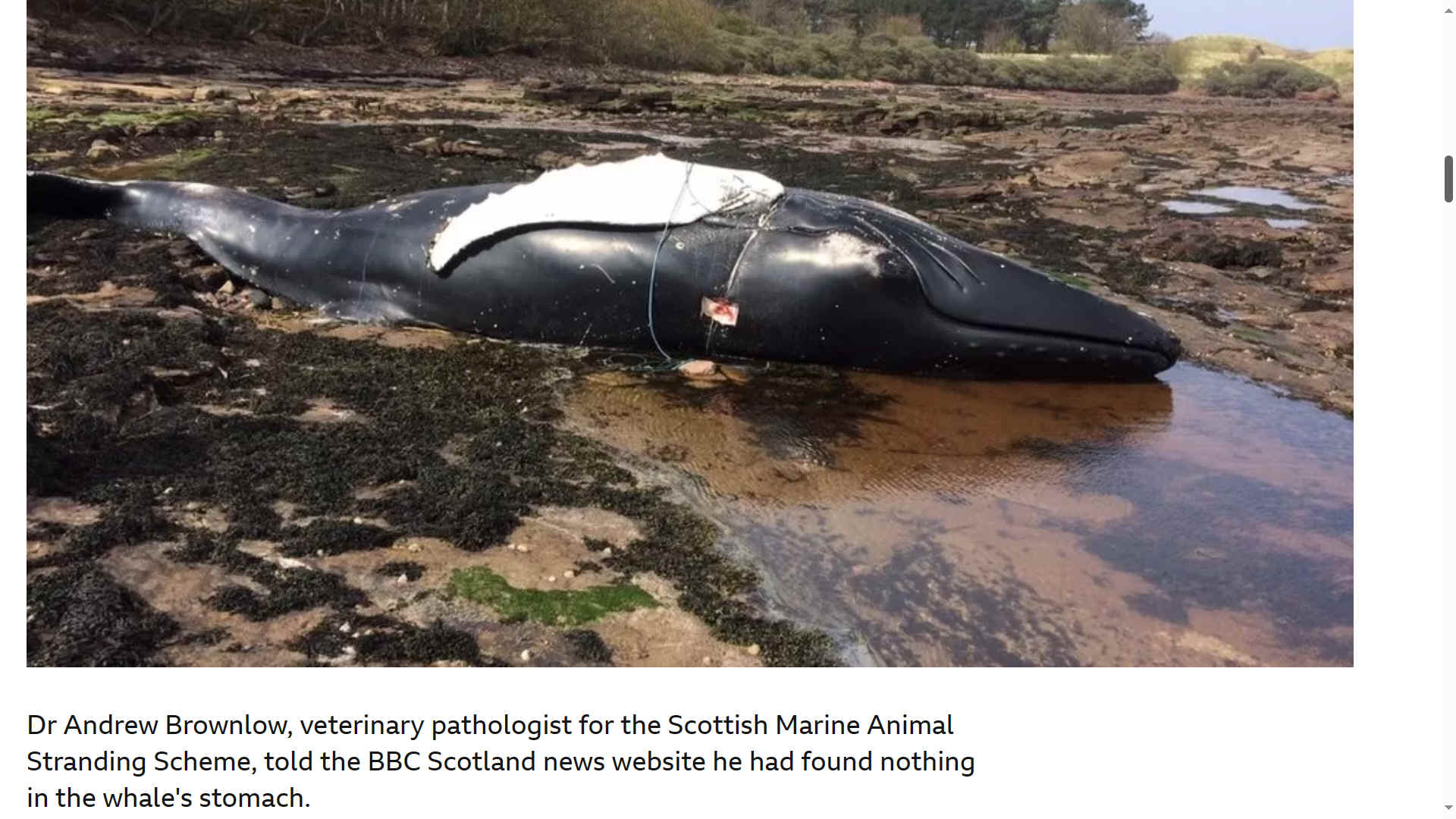
APRIL
2019 - A humpback whale was entangled in rope for "weeks, if not months" before it drowned off the coast of East Lothian, a post-mortem examination has found.
The young male, which was about nine metres long (30ft), was found at John Muir Country Park, near Tyningham.
Experts said the marine mammal had become very weak and had the most parasites they had ever seen.
The whale was towed out to sea and moved to another beach for the five-hour necropsy on Wednesday.
Dr Andrew Brownlow, veterinary pathologist for the Scottish Marine Animal Stranding Scheme, told the BBC Scotland news website he had found nothing in the whale's stomach.
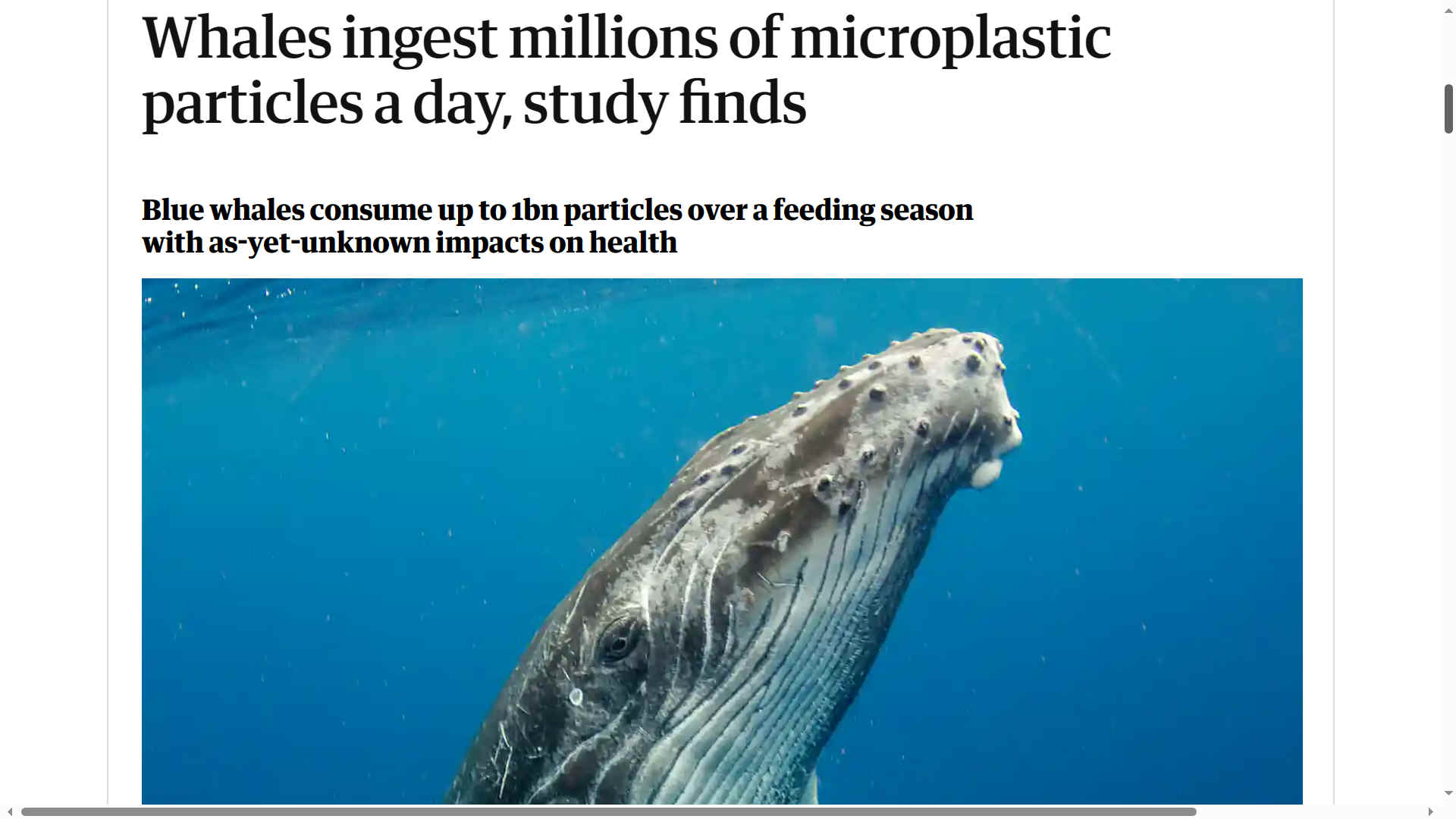
https://www.bbc.co.uk/news/uk-scotland-highlands-islands-50510666
https://www.bbc.co.uk/news/uk-scotland-edinburgh-east-fife-48051954
https://www.unep.org/news-and-stories/story/how-banish-ghosts-dead-fishing-gear-our-seas
https://sdgs.un.org/statements/global-ghost-gear-initiative-15704
https://earth.org/up-to-a-million-tons-of-ghost-fishing-nets-enter-the-oceans-each-year-study/
Please use our
A-Z INDEX to
navigate this site




